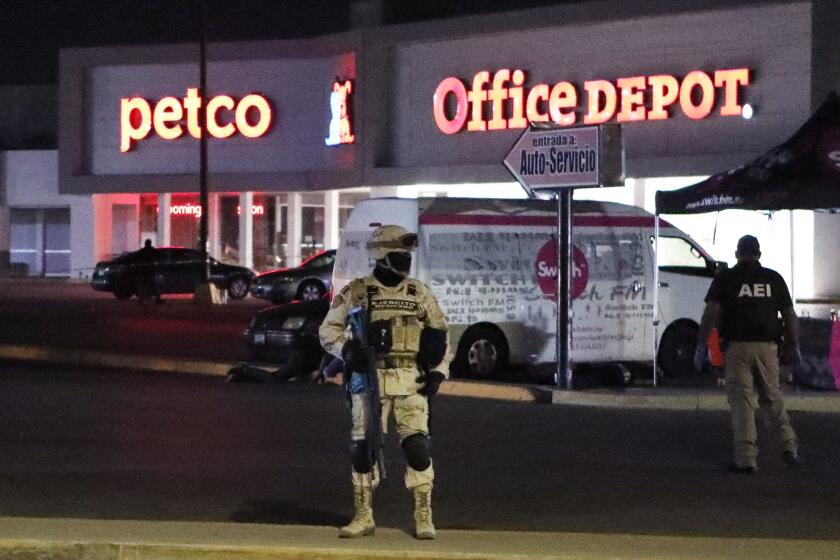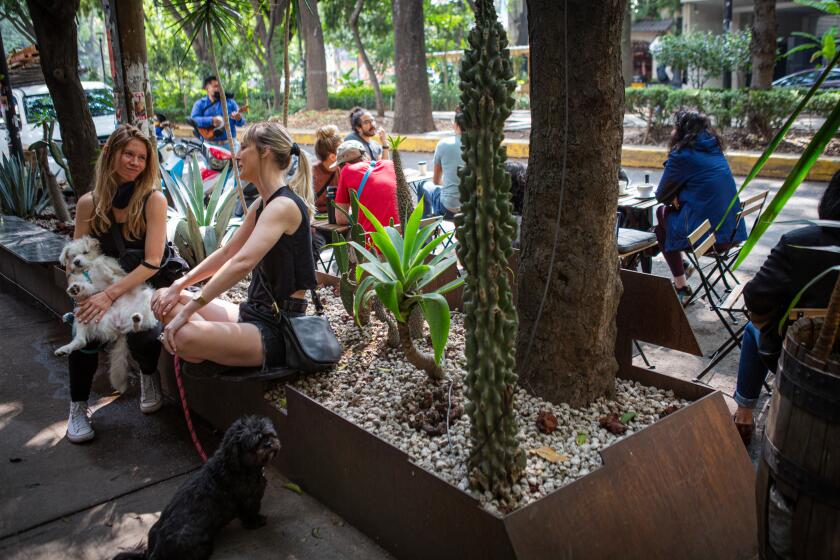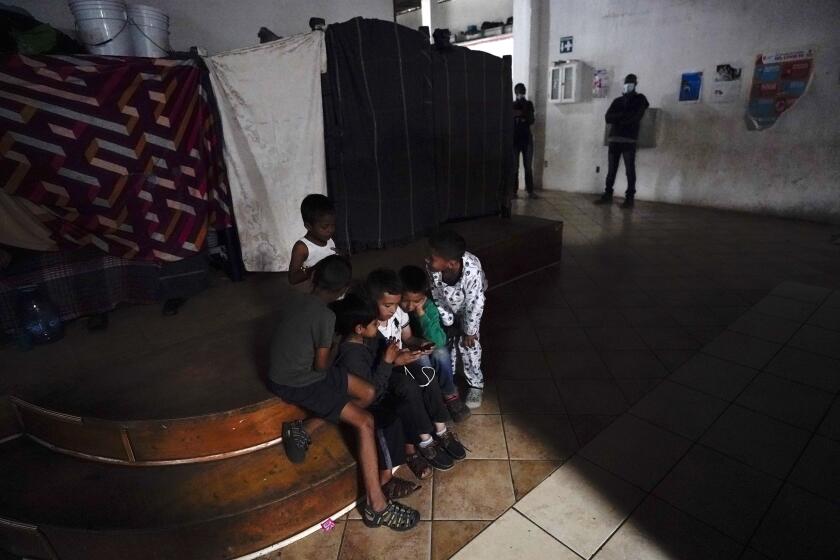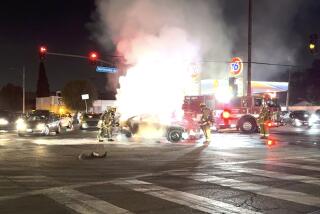Tijuana cartel violence caused border traffic to plummet. Now it’s getting back to normal
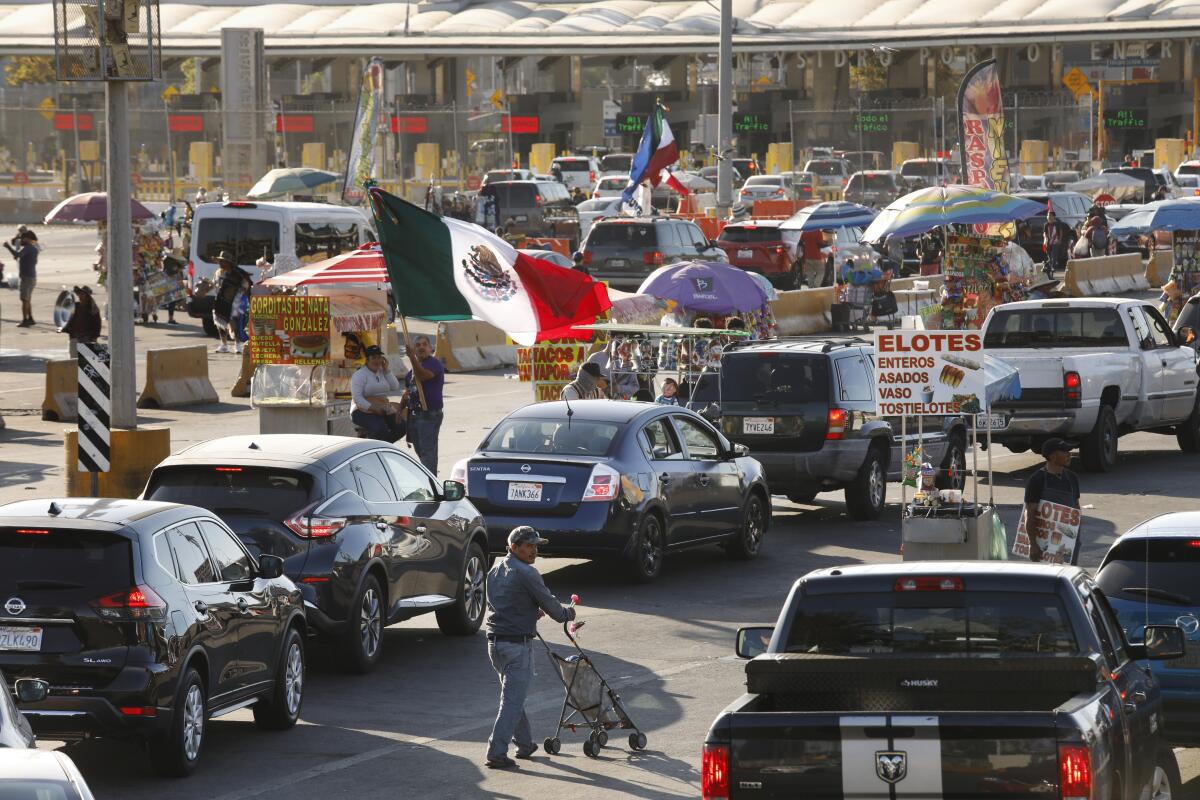
- Share via
Violence in Mexico’s border towns during the weekend significantly cut the usual flood of visitors making the trek from California down to Tijuana, Ensenada and Rosarito.
By Tuesday, however, things appeared to return to normal. Businesses kept their doors open and the hours-long traffic to go through border checkpoints to the United States was back.
At least two dozen vehicles were hijacked and burned around Baja California Friday, state officials said, a shocking, significant escalation of violence across the border in areas that Californians regularly visit. Reports that the Jalisco New Generation cartel had declared a curfew in Tijuana also began to circulate online, emptying many of the usually busy streets of the popular border town.
After the attacks, traffic at California land border crossings was significantly reduced as weekend visitors looked to avoid the flash of violence.
An outbreak of violence in Ciudad Juarez, across the border from El Paso, and in the western states of Jalisco and Guanajuato have stunned even Mexicans accustomed to violence.
Stats on the actual number of visitors during the weekend were not immediately available, but a spokesperson for U.S. Customs and Border Protection confirmed that officials saw “lighter than average traffic volumes and wait times at California border crossings this past weekend.”
Those who did make it across the border also saw the normally car-filled streets of Tijuana relatively empty as reports circulated of multiple cars being hijacked and left burning along major streets.
The violent attacks on Friday prompted the U.S. Consulate in Tijuana to order government personnel to shelter in place. In a show of force to try to reinstate order, military troops and special forces arrived at the city Saturday to reinforce national guard troops and local police.
No deaths were reported in Baja California, but the incidents were the third time in a week that violence erupted in towns across the border, a grim reminder of the hold cartels continue to have in the region.
At least 11 people were killed in Ciudad Juarez last week, and cartels also set fire to shops buses and cars and blocked major roads in Jalisco and Guanajuato.
American tourists and remote workers are gentrifying some of Mexico City’s most treasured neighborhoods. Backlash is growing.
The attacks prompted a Carnival Cruise Line ship, which was scheduled to dock in Ensenada Sunday, to cancel its stop.
“Due to recent local unrest and issued guidance from the US State Department for its employees to shelter in place in Ensenada and the surrounding region, the Carnival Radiance will cancel the call in Ensenada,” the company said in a tweet.
By Sunday, the U.S. consulate rescinded its order for personnel to shelter in place but still warned U.S. citizens to reconsider travel across the border “due to crime and kidnapping.”
Seventeen people were reportedly taken into custody in connection with the violence, which affected Tijuana, Tecate, Mexicali, Ensenada and Rosarito Beach.
One to three people a day are being removed from Migrant Protection Protocols, which required asylum seekers to wait in Tijuana for U.S. court cases.
City officials in Tijuana looked to reassert control over the city Sunday. On social media, Tijuana Mayor Montserrat Caballero asserted that the violence was limited between bad actors.
“I want it to be clear: no one that makes attempts against the security of our families is welcomed in this city,” Caballero wrote in a statement in Spanish. “Thugs should go and settle their scores between each other, outside of our city, we don’t want them here, don’t involve the people that work every day to build a better future and a Tijuana for all. Decent citizens are not bothered by anyone.”
Despite the spark of violence, border officials said they continued operations as normal, even while seeing fewer people crossing at the checkpoints.
“There were no changes for U.S. Customs and Border Protection at our border crossings, no closures and no new restrictions,” a spokesperson said. “CBP officers remain vigilant as they process travelers arriving from Mexico.”
By Monday, traffic returning to California from Mexico appeared to return back to normal at the busy U.S. ports of entry.
The two Calexico entry points on Monday were busy, with drivers waiting about two hours to get through the border, according to the U.S. Customs and Border Protection’s Wait Times portal.
By Tuesday, all signs seemed to point that things were returning to normal — for better or worse.
In Otay Mesa on Tuesday, at about noon, drivers sat in their cars for more than two hours in traffic waiting to enter the U.S.
More to Read
Sign up for Essential California
The most important California stories and recommendations in your inbox every morning.
You may occasionally receive promotional content from the Los Angeles Times.
